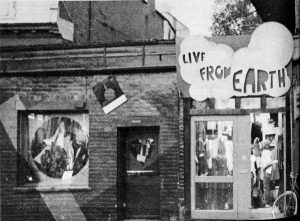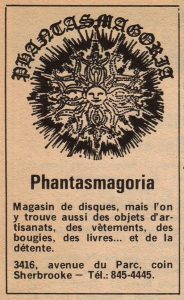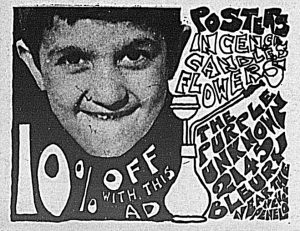The Village du Carré Saint-Louis Scene
The area around Stanley Street, once one of downtown Montreal’s vibrant nightlife hubs, began to decline in the mid-1960s. Montreal’s urban landscape was also undergoing major change. Several nightclubs closed their doors – in some cases to make way for parking lots. In 1967, The New Penelope itself moved from Stanley Street to 378 Sherbrooke Street West, an area nicknamed the Village du Carré Saint-Louis.
This area, between McGill University and Saint Denis Street, became a haven for hippies and artists, in the late 1960s. The New Penelope joined other coffeehouses and businesses catering to the counterculture of the time. This included places like l’Association espagnole, the Purple Unknown shop, the Phantasmagoria record store, and the Live from Earth shop.
On the eastern side, hippies would gather on Saint Denis Street and in the Carré St-Louis—where at one point, some claimed to found their own republic. Unfortunately for them, local police would disperse them nightly.
― Montréal Insolite. A Guide for Night Owls (1974), p.56.
Poets, authors, and intellectuals, writing in both official languages, lived and thrived in the area. Artist-run centers and other collectives began forming. Local newspapers and magazines, such as Logos, Mainmise, and Local Rag, were published there. Listen to historian Malcolm Reid, as he describes one of the neighborhood’s landmarks.
Listen to the audio clip with transcript: “Malcolm Reid recalls the bohemian Association espagnole”.
Clothing shops and other small businesses in the area supported the residents’ needs and their community. It was a sort of underground village, with its own ecosystem, reflecting the ideals of the time.
Listen to the audio clip with transcript: “Garth Gilker and his People’s Yellow Pages”.
Was Gary Eisenkraft a visionary, or did he get lucky with his move to Sherbrooke Street and Park Avenue? He did seem to be quite on top of the latest trends at the time. But, it wasn’t surprising to see that area become such a hotbed for the arts, as there had been artists present there for many decades.
The École des Beaux-arts and McGill University had long made it a district rich with students. The opening of Université du Québec à Montréal (UQAM) and the CÉGEP du Vieux-Montréal, at the turn of the 1970s, further increased the number of young residents.





